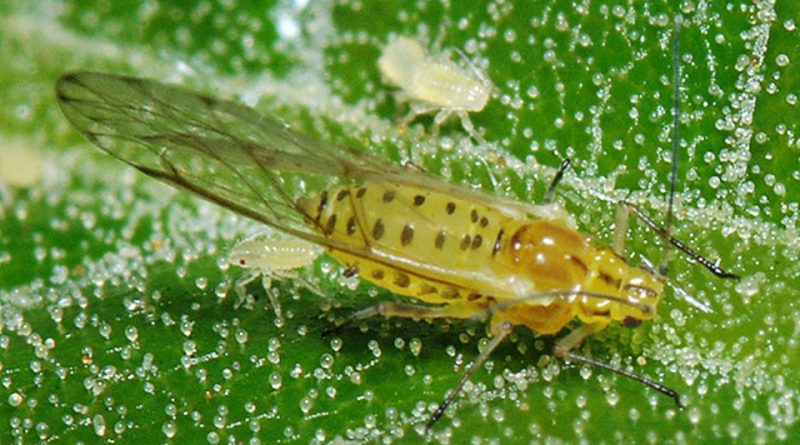Myzocallis castanicola
Myzocallis castanicola
The Oak aphid (Myzocallis castanicola Bak.) Is a recollection of a moth from the Aphididae family.
Systematics –
From a systematic point of view, it belongs to the Eukaryota Domain, Animalia Kingdom, Subgenus Eumetazoa, Superphylum Protostomia, Phylum Arthropoda, Subphylum Hexapoda, Class Insecta, Subclass Pterygota, Exopterygota Cohort, Subcoorte Neoptera, Superorder Paraneoptera, Rhynchotoidea Section, Rhynchota Order, Suborder Homoptera, Section Sternorrhyncha, Aphidoidea Superfamily, Family Aphididae, Subfamily Calaphidinae and therefore to the Genus Myzocallis and to the Specie M. castani cola.
Geographical Distribution and Habitat –
This chestnut aphid is present in the chestnut growth macaws and more rarely in the oak; it colonizes the lower part of chestnut leaves and occasionally is found on oak leaves.
Morphology –
Myzocallis castanicola is a small aphid of 2-3 mm, of a yellowish to greenish color with some dorsal brown-black markings. The winged adults of Myzocallis castanicola are yellow with distinctly brown wing veins and front veins ending in brown spots. They are also distinguished by a dark median strip on the head and chest and marginal on the dorsal part of the abdomen. Their antennas are dark beyond the basal half of the third segment. The tips of the shins and of the tarsi are dark, as well as the front veins. The larvae are characterized by short antennae and abdomen covered with numerous hairs.
Attitude and biological cycle –
Myzocallis castanicola tends to be monoecious and reaches its maximum infestation from late spring to early summer. It colonizes the leaves, especially on the underside, and the shoots from the beginning of the vegetative recovery of Castanea sativa (sweet chestnut) and Quercus spp (oak). Sexual forms appear in the autumn.
Ecological Role –
The infestation of this aphid has repercussions on the vegetative capacity, above all of the young seedlings, and because of the abundant honeydew that smears all the vegetation and the eventual furnishings, placed in the under-house of the gardens and parks. The damage is almost never very serious, in dwelling plants; in nurseries, on the other hand, in the case of strong attacks there is damage, even serious damage, due to the necrosis and deformation of the young shoots that lead to irregular growth or loss of the cimale.
They behave very similarly to two other related aphids which are: Myzocallis schreiberi H.R.L. and Tuberculatus querceus Kalt ..
As far as the struggle is concerned, remember that before intervening you must make sure of the presence of his natural enemies. These Aphids, especially in natural environments, are controlled by numerous natural enemies, especially from the middle of May onwards; among these are the Coccinellidi Coleoptera, the Diptera Sirfidi and Cecidomidi, the Crisopidi Neuroptera, the Hymenoptera Aphididae, etc.
In the case in which the infestations are high and, above all in the young seedlings of the nurseries, it is possible to act with selective aficidi. In adult plants and in areas of parks or ecologically delicate the struggle must be guided by a careful analysis of the infestation period which, especially for this aphid, can coincide with the presence of useful insects and pollinators. For this reason, intervention plans must be adopted that analyze the causes of infestations: lack of antagonists, vegetative state of the plants, possible interventions of incorrect fertilization (above all based on nitric nitrogen), etc.
Guido Bissanti
Sources
– Wikipedia, the free encyclopedia.- Russo G., 1976. Agrarian Entomology. Special Part. Liguori Editore, Naples.- Tremblay E., 1997. Applied entomology. Liguori Editore, Naples.

